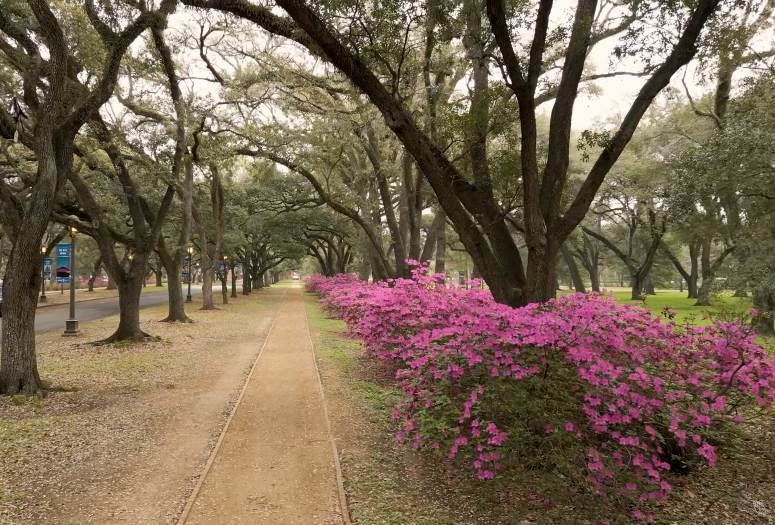Rice University blooms with possibility in more ways than one. In addition to offering a top tier education, the university is blossoming with gorgeous spaces that make the college experience even more enjoyable, including the azaleas that line Entrance 1.
The university welcomes members of the Owls community to visit the pathway between Entrance 1 and the Sallyport to enjoy the colorful flowers, community, a food truck and entertainment in celebration of the crown jewel of the university’s welcoming driveway from 12-1:30 p.m. March 1. As an added bonus, the first 100 people dressed in Rice blue will receive a free cupcake.
While Rice photographers will be on hand to snap images, guests are encouraged to bring a cell phone to capture Instagram-worthy pictures that will last a lifetime.
The azaleas also possess an intriguing backstory for how they made their way to Rice. Cassidy Johnson, assistant teaching professor in biosciences, provided a background to how these plants came to Houston and the Rice campus, which is officially designated as an arboretum.
Named in honor of the Houston horticulturist often described as the founder of the native plants movement in Texas, the Lynn R. Lowrey Arboretum is a teaching and research resource of Rice. Specifically, The Lowrey Arboretum consists of a collection of woody plants dispersed throughout the campus that represents native and introduced species suitable to the soils and climate of the Houston area. The Lowrey Arboretum is a remnant of a riparian woodland on the banks of Harris Gully. Through plantings of native grasses, wildflowers, trees and shrubs, Rice seeks to create a replica of a natural system once widespread in the Houston area. As a designated arboretum, Rice’s primary mission is to maintain the environment and landscape that currently exists on campus.
“The history of the arboretum and all of our green space on campus is really fascinating,” Johnson said. “It originally started when Tony Martino was collecting plants from overseas to bring them to Rice. He started planting them because he wanted us to study some of the compounds found in the plants to cure cancer, and so the reason we have some of the plants we do is from stuff that he brought over here hoping that there’ll be a connection between us investigating the plants and the medical center that was getting built at the time.”
Azaleas are flowering shrubs in the genus Rhododendron, particularly the former sections Tsutsusi (evergreen) and Pentanthera (deciduous). Azaleas bloom in the spring, and their flowers often last several weeks. Shade tolerant, they prefer living near or under trees.
“I encourage people to check out our awesome azaleas and also the arboretum,” Johnson said. “We have beautiful nature spaces on campus, and just as impressive as our academic buildings are and our students all over the world are learning to be the best members of society, Rice’s green spaces also serve the exact same purpose.”

